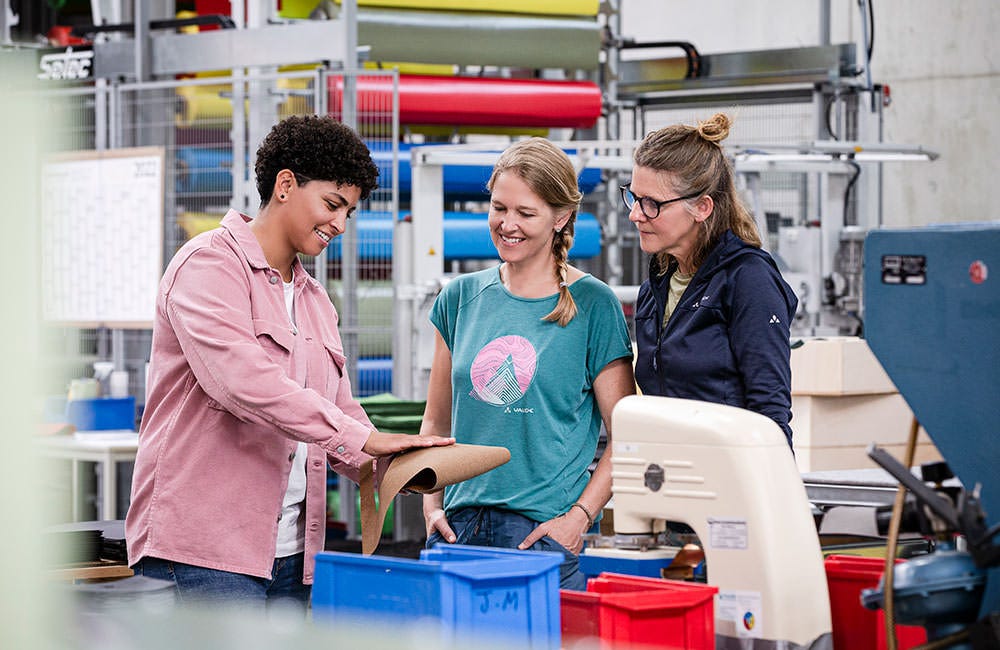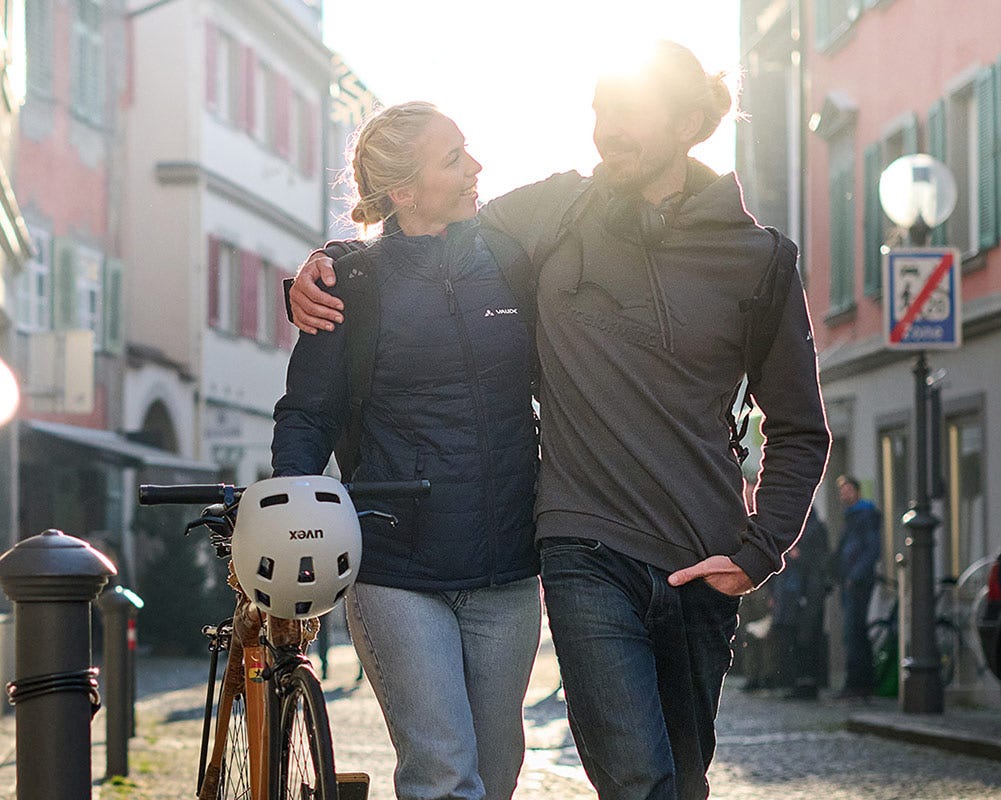VAUDE - Sustainable outdoor products
Thinking with foresight. Being considerate in our dealings with others. Acting from the heart. This is how we can move forward. In outdoor sports. In everyday life. And in the development of sustainable products. Because future generations will only be able to enjoy the mountains and a pristine planet if we conserve what we love.
VAUDE means environmentally friendly outdoor products made with fair production methods. The German family business with headquarters in Tettnang was founded in 1974 by Albrecht von Dewitz. The company’s name VAUDE derived from the initials vD of his surname and is pronounced [fau´de].
Discover VAUDE's revolutionary sustainability strategy in this film - The key to the green transition!
Products that meet the Green Shape Standard
We show that it is possible: Made with resource-saving materials. Produced under fair conditions. And powerful for you. This is how outdoor equipment should be.
If you would like to find out more about how we take responsibility with our Green Shape Standard, for example by using recycled and renewable materials or with the help of low-pollutant production processes, take a look at our holistic approach here.
Made in Germany
Designed in Germany and made in Germany: At our headquarters, we manufacture high-quality, waterproof bags and backpacks for bike tours, urban cycling and daily life.
Read more about our production in Germany and our Made in Germany products here.




Forever Yours – Giving our products a long life
Sustainability and product longevity go hand in hand: VAUDE products are characterized by a timeless design, robust materials and simple reparability.
However, a product only becomes truly sustainable if it is used for as long as possible. Here you can find tips on how to extend the life cycle of your product.
Antje von Dewitz - takes a clear position as CEO and visionary.
We take on responsibility
We take environmental and social factors into account in everything we do – and we report on this comprehensively and transparently in our Sustainability Report. Check out our history to find out what we've already achieved as we've followed this path.
We are happy to pass on our knowledge
With the VAUDE Academy for sustainable management we support other companies and organizations on their sustainable path.
We are particularly proud of the many prestigious awards we have received for our sustainable commitment and innovative products.
Together we are strong
We promote diversity because we are convinced that we all benefit from diversity and equal opportunities – and because we are firmly opposed to any form of discrimination. If you would like to work with us to help make the world a better place, come and join our team!
Together we are strong – that's why we cooperate with like-minded partners such as the German Alpine Association, our athletes and the Albrecht von Dewitz Foundation. In order to advance solutions for global problems such as climate change or microplastics in the environment, we work closely with experts, universities and NGOs and also campaign for our demands at the political level.
Is VAUDE a good brand?
For VAUDE, taking responsibility for people and nature is a matter of course - in that the company has established comprehensive, transparent social and ecological standards in its global supply chains. In this way, VAUDE ensures that its products are manufactured in an environmentally friendly and fair manner. Most VAUDE products meet the strict requirements of the VAUDE Green Shape Label and the state Green Button seal, which identify socially and ecologically produced textiles. Together with the Fair Wear Foundation, VAUDE is committed to fair working conditions worldwide.
The company does all this voluntarily and at its own expense. But in order for something to really change, everyone has to join in. Therefore, VAUDE advocates a rethinking in the economy, such as the approach of the common good economy (GWÖ). In this accounting, companies have to prove whether and how they contribute to the common good - VAUDE regularly scores above average here. In addition, VAUDE has long been calling for a comprehensive supply chain law that legally obliges all companies to take responsibility in their supply chains. VAUDE takes a public stance on issues such as climate protection, diversity or sustainable business practices in order to draw attention to these topics and drive change. The company has received numerous awards for its commitment, including the GreenTec Award (2018), the European Business Award (2017) and the German Sustainability Award 2024 Award.

